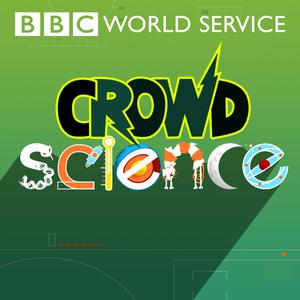
CrowdScience
BBC World Service
We take your questions about life, Earth and the universe to researchers hunting for answers at the frontiers of knowledge.
- 26 minutes 33 secondsHow should we protect our coastlines?
Coastlines around the world are changing, causing serious problems for the many communities living near the sea, as well as vital and fragile coastal ecosystems.
In the second of a two-part special on coastal erosion, CrowdScience explores the best ways to tackle this problem. Presenter Caroline Steel visits the Caribbean island of Puerto Rico to see the various methods they use to protect their coasts.
First up: ‘riprap’ – rocks strategically placed to keep the encroaching sea at bay. The problem is, while it protects the area immediately behind the rocks, riprap can exacerbate erosion nearby.
But there are other, more nature-friendly solutions, including sand dune restoration. Caroline picks up her shovel and helps to re-plant dunes, destroyed in the past by erosion as well as sand extraction for the construction trade. The roots of these plants stabilise the dunes, while building boardwalks prevents further damage from humans.
Nature also offers the perfect offshore protection against coastal erosion: coral reefs. These are the first line of defence in absorbing the power of the ocean’s waves. Down on the beach, we see for ourselves just how effective they are. The reefs face threats, but restoration plans are afoot. We visit a nursery that grows corals to plant out on the reefs – and find out about corals’ surprising cannibalistic tendencies in the process.
Featuring: Professor Robert Mayer - Director of Vida Marina, Center for Conservation and Ecological Restoration, University of Puerto Rico Nada Nigaglioni - Biology student, University of Puerto Rico Ernesto Diaz - Caribbean Regional Manager at TetraTech Dr Stacey Williams - Executive Director, ISER Caribe
Presenter: Caroline Steel Producer: Hannah Fisher Editor: Cathy Edwards Production Co-ordinator: Liz Tuohy Studio Manager: Emma Harth
(Photo: Coast restoration measures at Ultimo Trolley Beach, Puerto Rico. Credit: BBC)
26 April 2024, 8:00 pm - 26 minutes 28 secondsAre our coastlines being washed away?
Around the world, coastlines are constantly changing due to the power of waves, currents and tides. Coastal areas are also some of the most heavily populated and developed land areas in the world. So it’s not hard to see how the natural process of coastal erosion can cause serious problems for us.
It’s an issue that’s been bothering CrowdScience listener Anne in Miami Beach, Florida. She can see the beach from her window and wonders why after every storm, several trucks arrive to dump more sand on it.
In this first of two programmes, CrowdScience visits Anne’s home in south Florida and finds out how erosion threatens Florida’s famous beaches. Caroline Steel speaks to geoscientist Dr Tiffany Roberts Briggs and hears why it’s such a problem for this tourist-reliant state. Tiffany explains the delicate balance between natural processes and human infrastructure.
Meanwhile, the Caribbean island of Puerto Rico declared a state of emergency in April 2023 due to coastal erosion. Caroline witnesses the impacts of erosion first-hand, as Ruperto Chaparro shows her abandoned houses crumbling into the sea.
But how can we quantify the rate of erosion? Dr Kevian Perez in the Graduate School of Planning at University of Puerto Rico explains the methods they use to monitor Puerto Rico’s coastlines, and how they are evaluating the effectiveness of different mitigation methods.
However, some of the methods used to protect coastal communities from the encroaching sea have done more harm than good. So what are the best ways to tackle this problem? That’s what we’ll be exploring in next week’s programme.
Presenter: Caroline Steel Producer: Hannah Fisher Editor: Cathy Edwards Production Co-ordinator: Liz Tuohy Studio Manager: Steve Greenwood and Bob Nettles
Featuring: Dr Tiffany Roberts Briggs, Associate Professor at Florida Atlantic University Ruperto Chaparro, Director of Sea Grant Programme, University of Puerto Rico Anabela Fuentes Garcia, Villa Cristiana community leader Dr Kevian Perez, researcher at the Coastal Research and Planning Institute of Puerto Rico at the Graduate School of Planning
(Photo: Puerto Rico after Hurricane Maria. Credit: Orlando Sentinel/Getty Images)
19 April 2024, 8:00 pm - 32 minutes 44 secondsHow do my ears sense direction?
How do we know where a sound is coming from?
Another chance to hear this ear-opening episode, exploring a question from CrowdScience listener Chiletso. One day, he heard his son bounce a ball and instantly knew the direction it was travelling. How?
Anand Jagatia sets out to discover what makes left, right, up and down sound so different.
First, he gets blindfolded, so Alan Archer-Boyd, former auditory scientist and lead engineer at BBC R&D, can put his sound localisation skills to the test. It turns out that having two ears and pinnae, those flappy bits of cartilage on the side of your head, help a lot.
Professor Eric Knudsen shares how the barn owl’s asymmetrical ears allow it to hunt mice, even in complete darkness.
And Anand uncovers how far he can push his own spatial hearing. Blind activist and researcher Thomas Tajo teaches him how to echolocate like a bat, and Dr Lore Thaler explains what is going on in the brain of experienced echolocators.
This programme was originally broadcast in March 2023.
Presented by Anand Jagatia Produced by Florian Bohr for the BBC World Service
Image: Boy with hands at his ears Credit: Silke Woweries/Getty Images
12 April 2024, 8:00 pm - 26 minutes 28 secondsHow many people have ever existed?
Today there are over eight billion people on Earth. That’s an awe-inspiring figure… but how does it compare to the vast numbers who came before us? Listener Alpha wants to know how many people have ever existed, so CrowdScience sets out to do a historical headcount.
The Population Reference Bureau in the USA estimated this number back in the 90s, and have been updating their calculations ever since. Demographer Toshiko Kaneda explains how their model works, the assumptions it makes – and the huge uncertainties around the number it comes out with.
We first need a date for when ‘humans’ first began, so Caroline travels to the Natural History Museum in London to meet human evolution expert Chris Stringer, and marvel at his collection of replica fossil skulls. Chris demonstrates how to distinguish our species, Homo sapiens, from other species like Neanderthals. When did these species first appear - and which of them count as human?
And once you know where to start the clock, how do you estimate the numbers of people alive at different points in history? For a population demographer like Walter Scheidel, it helps that some ancient civilisations kept detailed censuses, a few of which have survived to the present day. Caroline and Walter pour over one of these census fragments, and learn how to combine them with other archaeological clues to get some very rough numbers.
And finally: what does the future of our population look like? Poonam Muttreja from the Population Foundation of India discusses developments in the world’s most populous country, as well as the big demographic trends ahead for humanity.
Presenter: Caroline Steel Producer: Phil Sansom Additional Recording: Umaru Fofana Editor: Cathy Edwards Production Co-ordinator: Connor Morgans Studio Manager: Sue Maillot
Featuring: Toshiko Kaneda, Technical Director of Demographic Research, Population Reference Bureau Chris Stringer, Research Leader in Human Evolution, Natural History Museum London Walter Scheidel, Professor of Classics and History, Stanford University Poonam Muttreja, Executive Director, Population Foundation of India
5 April 2024, 8:00 pm - 27 minutes 1 secondCould climate change lead to more volcanic eruptions?
We spend a lot of our time thinking about climate change, but listener Paul has a question that isn’t usually part of the conversation. He wants to know whether a hotter atmosphere will affect how often volcanoes erupt, or make them more explosive when they do.
CrowdScience travels to New Zealand to search for answers, exploring volcanic craters and discovering traditional Maori knowledge about volcanoes.
Contributors: Geoff Kilgour, Volcanologist, Geological and Nuclear Sciences Taupo, New Zealand Heather Handley, Volcanologist, University of Twente, The Netherlands Pouroto Ngaropo, Historian and Matauranga Māori expert, Rotorua, New Zealand
Presenter: Caroline Steel Producer: Emily Bird Editor: Cathy Edwards Production Co-Ordinator: Connor Morgans Sound Engineer: Steve Greenwood
(Photo: Icelandic volcano. Credit: KRISTINN MAGNUSSON/Getty Images)
29 March 2024, 9:00 pm - 27 minutes 29 secondsDo animals have anxious habits like us?
Many of us have habits that calm us down in times of stress. Things we find deeply comforting, like sucking our thumb or biting our nails. We might not even be aware we’re doing them, but they play a fundamental role in helping us regulate our emotions.
Our question this week comes from CrowdScience listener and nail-biter, Ash. He wants to know where these habits come from. And since his pet dog is also a nail-biter: do we share these traits with other animals?
Recently, a video of a mouse cleaning up a man’s shed took the internet by storm. Was this a house-proud mouse, or was it the animal's way of making sense of a frenetic environment? An emerging field of scientists focusing on animal behaviour and emotions help us shed some light on such questions.
Along the way we meet a dog training specialist, learn what a sniffari is, go for playtime with a thumb-sucking otter, and visit an OCD clinic. We’ll also be getting tips on how to give your pets the best home environment, and meet an animal enrichment officer in South Africa, who knows how to spot the signs of an unhelpful habit developing.
Contributors: Karolina Westlund, Ethologist, Stockholm University and ILLIS Ben Terry, CBT Therapist, Priory Hospital North London Karin Pienaar, Animal Behaviourist, COAPE International Candice Ward, Animal Behaviourist, Johannesburg Zoo
Jaak Panksepp clip: The science of emotions: Jaak Panksepp at TEDxRainier
Producer: Robbie Wojciechowski Presenter: Alex Lathbridge Editor: Cathy Edwards Production co-ordinator: Connor Morgans Additional recording by Elna Schutz
(Photo: Portrait of border collie puppy biting a curtain. Credit: Rawlstock/Getty Images)
22 March 2024, 9:00 pm - 29 minutes 15 secondsIs the BMI fatphobic?
Crowd Science listener Maik wants to know what the BMI is and what his BMI score says about his body. He trains dogs for a living and wonders if, like different breeds of dog, we simply have different body types? Marnie Chesterton comes up with some answers, talking to doctors about how the BMI is used and misused in clinical practice, and looks at some alternative methods for measuring our body composition. She also sits down with philosopher Kate Manne to discuss the realities of living in a fat-phobic world. We hear from Tonga in the South Pacific, where high BMI scores have labelled the country highly obese. But this is not necessarily how Tongans see themselves. And Marnie finds out if the BMI will continue to be used across the world as an important health marker or whether it is destined for the scrap heap of medical history. Contributors: Professor Kate Manne Dr Francesco Rubino Dr Naveed Sattar Professor Brendon Noble Technician Leah Siegel Fononga Pulu Sela Latailakepa Presenter: Marnie Chesterton Producer: Richard Walker Editor: Cathy Edwards Production co-ordinator: Connor Morgans Studio manager: Emma Harth
15 March 2024, 9:00 pm - 29 minutes 10 secondsDo we all see the same colour?
CrowdScience listener Gregory wants to know what affects the way we see the colours of the world. He was looking at a blue summer sky with a friend and they got to wondering whether they both see the same colour blue. So what does influence our vision of the colours that surround us? Could eye colour have anything to do with it? And can we ever really know if your blue sky is the same as mine?
Caroline Steel comes up with some answers, talking to colour scientists about their research into the multiple factors that enable us to see in multi colours, from the intricate biology of our eye to the changing environment around us.
She also investigates her own colour vision and solves a personal mystery, discovering why the world has always looked a slightly different colour from each eye.
Contributors: Professor Jay Neitz, Department of Opthalmology, University of Washington, US Professor Hannah Smithson, Department of Experimental Psychology, University of Oxford Dr Juan Perea García, researcher, Department of Cognitive Psychology, University of Leiden Dr Lauren Welbourne, researcher, Department of Psychology, University of York Dr Adam Bibbey, lecturer in sport, Department of Sport, Oxford Brookes University
Presenter: Caroline Steel Producer: Jo Glanville Editor: Cathy Edwards Production co-ordinator: Connor Morgans Studio manager: Jackie Margerum
(Photo: LWA)
8 March 2024, 9:00 pm - 27 minutes 20 secondsHow bad is our data for the planet?
Storing your data in ‘the cloud’ might sound like an ethereal, intangible place, but it’s actually a physical location - a data centre. CrowdScience listener Art is worried about how much energy and water data centres are consuming. He’s from Ireland, where data centres are gobbling up almost 20% of the national electricity supply and that’s growing, fast.
So how much energy and water are data centres using globally? And how can they become more sustainable? To answer Art’s question CrowdScience heads to chilly western Norway to visit a data centre hidden deep within a mountain, that’s said to be one of the most efficient in the world. And we hear how a data centre in South Africa is saving water and dealing with crippling power cuts by generating its own renewable energy.
Do we just need to stream less TV and reduce our email inbox? With the help of carbon footprint expert Mike Berners-Lee, we crunch the numbers to find out.
Featuring: Svein Atle Hagaseth, CEO of Green Mountain data centres in Norway Mike Berners-Lee, Professor at Lancaster University’s Environment Centre and consultant at Small World Consulting Thulani Ncube, Group Energy Lead at Africa Data Centres
Presenter: Anand Jagatia Producer: Sophie Eastaugh Editor: Cathy Edwards Studio Manager: Donald MacDonald Production: Jonathan Harris & Connor Morgans Additional Recording by: Kobus van Niekerk
1 March 2024, 9:30 pm - 28 minutes 53 secondsWhy do we have wisdom teeth?
Why do humans have wisdom teeth if so many of them get removed soon after they appear?
Wisdom teeth, the third molars in the back of our mouths, are so called because they normally appear in late teenage, early adulthood – the time in life we supposedly have learned some wisdom. But around 25% of people don’t develop all four. Of those that do emerge, it is not uncommon for them to appear at nasty angles, jutting into the tooth next door causing potentially dangerous infections and pain. Because of this, for decades many people have them surgically removed.
Listener Khaleel was preparing to have his remaining wisdom teeth removed when he wrote to CrowdScience to ask about them. Given that they can seem to cause more harm than good, why has evolution resulted in these troublesome teeth? But many people have perfectly uneventful relationships with their wisdom teeth, so have we perhaps removed more than we needed to over the years?
Anand Jagatia chews it over with the help of surgeons and dentists to try to extract the truth – why DO we have wisdom teeth?
Featuring: Tanya M Smith, Professor in the Australian Research Centre for Human Evolution at Griffith University, Australia Patrick Magennis, Consultant Oral & Maxillofacial Surgeon at University Hospitals Aintree, Liverpool UK Verena Toedtling, Dentist and Specialist Oral Surgeon, UK
Presented by Anand Jagatia Produced by Alex Mansfield
23 February 2024, 9:30 pm - 27 minutes 1 secondWhat time was the first clock set to?
When the first person set the very first clock, how did they know what time to set it to? This question, from listener Chris in the UK, sends CrowdScience off on a quest into the history of timekeeping.
From sundials to water clocks, from uneven hours to precision seconds determined by the vibration of an atom, we examine how we came to measure time. We visit possibly the oldest working mechanical clock in the world to discover how its time was originally set; and hear how the time we go by today is not quite the same as it was in the past.
Will all this be enough to solve Chris' question, or has he stumped the team?
Featuring:
Ian Westworth, Clock Mechanic Dr. Chad Orzel, Associate Professor of Physics and Astronomy at Union College Anna Rolls, Curator of Clocks, Clockmakers’ Museum Peter, Guide, Salisbury Cathedral Dr. Jun Ye, Physicist at NIST (National Institutes of Standards and Technology) and The University of Colorado, Boulder.
Presenter: Caroline Steel Producer: Margaret Sessa-Hawkins Editor: Cathy Edwards Production Co-ordinator: Jonathan Harris Studio Manager: Jackie Margerum
(Photo:Stopwatch on red background. Credit: Martin Poole / Getty Images).
16 February 2024, 9:00 pm - More Episodes? Get the App
Your feedback is valuable to us. Should you encounter any bugs, glitches, lack of functionality or other problems, please email us on [email protected] or join Moon.FM Telegram Group where you can talk directly to the dev team who are happy to answer any queries.
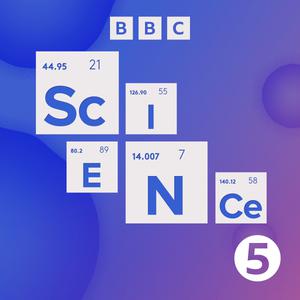 5 Live Science Podcast
5 Live Science Podcast
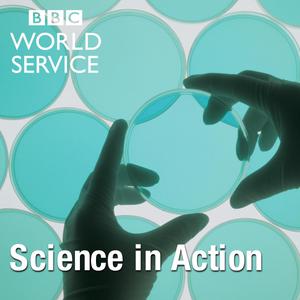 Science In Action
Science In Action
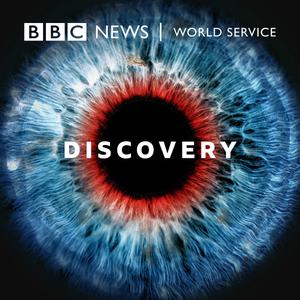 Discovery
Discovery
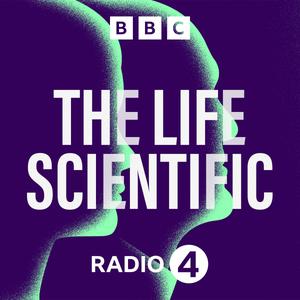 The Life Scientific
The Life Scientific
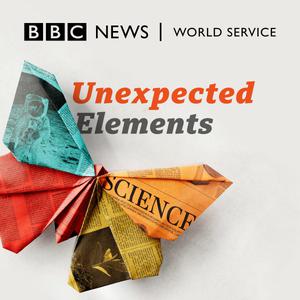 Unexpected Elements
Unexpected Elements
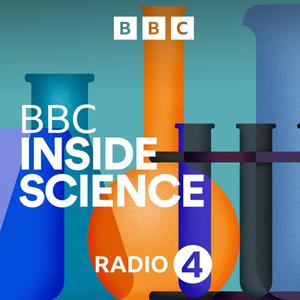 BBC Inside Science
BBC Inside Science